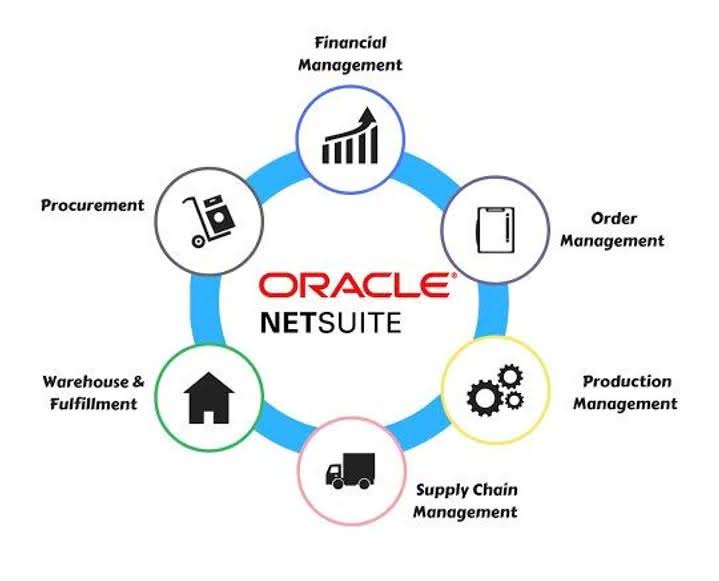Content

The forecast may be used for short-term operational considerations, and there is no variance analysis. A forecast is updated monthly, sometimes weekly, depending on the financial condition of the company. The budget is a plan of action over a period that tasks should accompany. The budget quantifies expectations for what your business desire to achieve. In this case, your forecast, which is based on your actual numbers (that aren’t hitting the target currently), will show revenue numbers that are lower than your budgeted numbers.
Forecasting increases the confidence of the management team to make important business decisions. Although similar terms, budgets and forecasts are used differently by financial professionals.
They focus on high-level goals and help businesses develop a strategy. Budgets allocate funds, while forecasting is a tool used to make those allocations. GrowthForce accounting services provided through an alliance with SK CPA, PLLC. So get ready to enjoy the Turkey, but spend some time over the long weekend working your best guess of what next year is going to look like so you have a baseline to compare actual results against. You can’t predict the future, so don’t spend a lot of time to get it just right.
What Is Budgeting?
Without a financial forecast, you won’t be able to accurately judge whether or not you’re currently on track to reach the numbers established by your budget. Because budgeting and forecasting don’t work on the same timeframes, there isn’t technically one that comes before the other.
Analytics speed up the decision-making process by making your data more accessible. The forecast can also be used for short term tasks such as changes in production plans, staffing, etc. The actual results that a forecast shows are aligned by the management to achieve the goals mentioned in a budget. Let’s get into the distinction between budgeting and financial forecasting, and how you can use each tool to improve your business performance.
- A long-term forecast will provide valuable output to the management for their strategic business plan.
- However, even with plans that try to account for every possible outcome, issues can still hit you that you wouldn’t expect.
- Hence, while the budget provides management insight on what they want the company to attain, the forecast shows whether the company is able to achieve its budget or not.
- Bear in mind, the end result of aggregating all of the separate time periods should equal the budget amounts for the year.
It shapes all the decisions going forward; a litmus test for decision making and planning. Challenge yourself and your team to become more efficient and to create better standards for planning and budgeting. In turn, you will be less likely to reinvent the wheel each year. This article is a practical overview of each process (Business Planning, Forecasting & Budgeting), how to connect them, and have them add value to your business.
Oh, The Joys Of Budgeting And Forecasting!
For example, a company might have quarterly forecasts for revenue. If a customer is lost to the competition, revenue forecasts might need to be updated. While most budgets are created for an entire year, that is not a hard-and-fast rule. For some companies, management may need to be flexible and allow the budget to be adjusted throughout the year as business conditions change. The purpose of forecasting is to predict your company’s financial future. Forecasting aids in the making of business decisions and in understanding their impact before you implement them.

Although budgeting and financial forecasting are often used together, distinct differences exist between the two concepts. Budgeting quantifies the expected revenues that a business wants to achieve for a future period.
Budgeting Vs Financial Forecasting: Key Differences
Objectives – A budget is meant to identify areas for cost-cutting and business optimization. A forecast helps project a growth trajectory and the overarching strategies needed to achieve it. These historical data sets are then combined with market experience and trends to paint a more comprehensive picture of the business and its place within the market. Cash flow projection – By measuring the business’ cash influx and outflux over a given period, this projection elucidates a company’s financial health and liquidity.

One in five of the organizations that implemented rolling forecasts recently have abandoned them because they were more complex than initially expected. In this blog post, we’ll answer common questions around getting started with rolling forecasts.
Budgeting: Explained
Your budget represents what you want to achieve, whereas a forecast estimates what you’re on track to achieve. Both serve their own unique purpose and are crucial to building the financial model for your business. They manage month to month operations and set expenditure limits.
An updated and strategic budget can help you adjust a financial forecast to reflect increased savings or mitigated losses. Both are needed for a healthy future perspective in a growing company, and both should be frequently updated. Firm budgets can be set annually, quarterly, monthly, or even weekly depending on the size and reach of your company. However, budgets should be updated constantly to reflect the spending that has occurred and any other changes to the company’s economic situation.
- The vast amounts of available data for forecasting created a need for more sophisticated software tools to process it.
- If you find discrepancies with your credit score or information from your credit report, please contact TransUnion® directly.
- Conversely, you should think of rolling forecasts as a living document.
- Rolling forecasts allow you to make quick tweaks along the way rather than letting mistakes mount up and only giving yourself one shot to make those changes annually.
- This method eventually leads to an extended arbitrary decision-making process that cannot be objectively supported or justified.
- This is because the budget itself consists of the outcomes of the forecast.
- These markers provide budgetary numbers vs. actual financial data points that can provide valuable information to make needed adjustments to the company.
Use that as an opportunity to flex your advisory muscles and teach them the difference. If business scenarios are only considered using budgeting techniques, the tendency Budget vs Forecast is to be overly cautious. The industry term stretch-goal is used to indicate when a business is setting a higher goal than originally sought or thought possible.
How Can A Budget Help With Financial Planning?
That’s why you’ll need to make forecasts to inform your budget periodically. Today, we’ll discuss the difference between budget and forecast so you can derive the most benefit out of each one.
- You may also need current budgets or profit-and-loss statements to acquire financing or investors.
- Extrapolation uses historical revenue data to predict future behavior by projecting the trend forward.
- Zero-based budgeting also fits its moniker—every department starts at zero and must build a budget from scratch, ignoring all resources and expenditures currently at their disposal.
- Of the details, especially if there are workforce reductions or other sensitive assumptions.
- A business relies on forecasts to make decisions regarding budgeting, developing products and appealing to customers.
- Budgeting and financial forecasting should work in tandem with each other.
This framework will provide increased visibility into how financial decisions translate into results. To be successful, budgets and forecasts need to reflect reality. Instead of being set in stone, budgets should be updated as frequently as needed to reflect economic, organizational and other outside variables.
It also helps a company to make a strong business strategy out of a long-term forecast. Budgeting also helps to know about the financial health of a business.
So what could cause your budget and forecast to look completely different from one another when you compare them? In the example shown above, the budget and forecast differ somewhat, but they aren’t drastically different.
Benefits Of Business Forecasting:
Planningprovides a framework for a business’ financial objectives — typically for the next three to five years. A business always needs a forecast to reveal its current direction, while a budget is not always necessary. A forecast also helps you be reactive to change in a way that a budget does not. A forecast is an estimate or prediction of what your business will actually achieve. The goal is to earn more revenue than you budgeted for and never to exceed your expense budget. Of course, if your churn is lower than expected, you’ll be above target and won’t need to make any changes in that regard if you want to meet your budgeting numbers.

Your financial forecast will let you know whether or not you’re currently on track to hit your budget numbers. You’ll be able to anticipate what numbers you’ll hit so that your startup can take the appropriate actions to change the course if necessary. Both budgeting and forecasting are typically used together, but they don’t have the same purpose. A budget and a forecast are two of the most important tools for startups when it comes to financial modeling. They work together to help you steer your startup in the right direction, but they shouldn’t be confused for each other. If your clients are asking for help with budgeting, they may not appreciate the difference between an operational budget and a strategic forecast for long-term growth.
How Do You Prepare A Forecast For Your Small Business?
The following image shows the Financial Budget vs. Forecast by Period report displaying budget or planned cost, which is compared to forecast cost. Below are best practices to follow when creating your financial forecasts. Treat your forecast as a constant, rolling it over each month instead of creating a once-a-year forecast. Making it a core business process can help you to always stay abreast of the current status of the business and allows for issues that do pop up to be addressed much more quickly.
Budgets are regularly updated and considered dynamic financial models. It is often compared to actual results and accompanied by variance analysis that explains any deviations from expectations. A budget is typically a static financial https://www.bookstime.com/ plan, meaning they are typically only updated once a year. The future of planning, budgeting and forecasting Learn how companies are delivering dependable business forecasts and optimizing the allocation of resources.
Building Your Budgets And Forecasts With Crystal
The business’s forecast, though, might show that it exceeded its budgeted operational expenses. In this case, the business might update its forecast to reflect its current position while it maintains the budget as-is to document the overdraft in an annual financial report.